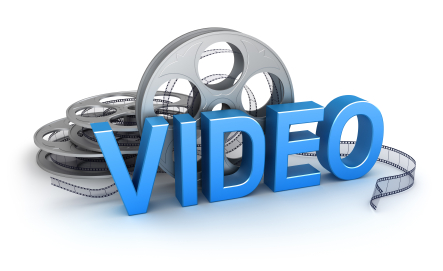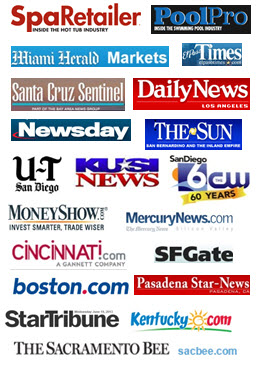Despite being over a decade old, YouTube still acts as a ripe garden bed for audience growth. Brands looking to interact with audiences in current, relevant ways will find that video marketing content is one of the most effective methods they have at their disposal. They’ll also find that YouTube still remains one of the best platforms to host this content.
While big social media platforms like Facebook and Twitter are shrinking, YouTube pulls in over 1.8 million unique users every month. That figure, by the way, ignores all of the views that come from people who aren’t logged into a Google or YouTube account. YouTube’s traffic volume is so large that it is the second biggest search engine after Google and likely the most common platform for embedded videos seen around the web.
Creating a YouTube channel is therefore one of the best methods for earning traffic and engagement from audiences. By making smart moves and structuring your YouTube channel properly, your video content marketing campaigns can be poised for excellent growth. You’ll also be positioned to easily share and embed video content in order to grow your viewer base. It’s the perfect recipe for branded exposure!
You can start your business’s YouTube channel off on the right foot by following these steps to create a channel and give it the most growth potential.
Decide on Your YouTube Channel’s Video Marketing Positioning and Strategy
Your channel’s “position” is a name for basically everything that makes it distinctive. The idea is to not only have a channel that matches your branding principles but that can also meet your goals for audience building, lead generation, engagement, awareness and more.
 The first step is to determine exactly who your audience segments will be, along with a few actions you want them to take in response to your content.
The first step is to determine exactly who your audience segments will be, along with a few actions you want them to take in response to your content.
For example, maybe you are in an exciting industry like online retail for motorcycle apparel and accessories and you want everyone to come to your channel weekly for reviews and news on the latest products. Or, maybe you are a law office that wants to pop up first when people search for answers to their legal questions.
As another alternative, maybe you want to create highly shareable videos that generate brand awareness and drive traffic towards your site.
Your goals and your audience will significantly affect how you decide to run your channel, including:
- Your style and approach (e.g., formal or conversational)
- The format of your videos, such as an ongoing “show” vs. how-to videos vs. quick Q&A sessions
- How long your typical videos will be
- How often you will post new content
- Who your target audiences will be, and how you intend to reach them
- Your amplification strategy for getting maximum views on your new content, such as sharing new videos on Facebook or through your email list
All of these factors come together to make your YouTube channel unique compared to others. And being unique is important considering that over 400 hours of new content are uploaded on YouTube each minute. Being unique also means that your channel is as prepared as it can possibly be to appeal to your chosen audience and accomplish your chosen goals.
Decide on a Channel Name and Icon
Your next step is to start filling in the blanks for your new channel. Specifically: what’s your name going to be? And what image will you use for your channel icon?
These two seemingly minor things can have a gigantic impact on your ability to attract audiences. Your channel name serves as both your brand and your initial pitch to potential viewers.
You can choose a descriptive name, such as “DUI Law Q&A,” which already promises what type of content the channel will contain.
Or, you can go for a long-haul strategy and create a unique brand name for your channel that allows it to build a presence as it builds an audience. Channels like Smosh and Dude Perfect have titles that are as recognized as any pop culture movie or show.
Plenty of people choose to use their business name or even their personal name as their channel’s title. This strategy provides the benefit of immediate association. As your channel gains strength, you can rely on more people knowing who you are or what your company is, thanks to the shared name.
Once your name is chosen, decide on an icon that reads well on a small screen. Keep in mind that over half of all YouTube views come from mobile devices. You might not be able to use your logo or cram a bunch of text into your shrunken down profile picture.
Settle on something that’s easy to comprehend, such as a few letters or your host’s face. You can also use some sort of iconographic representation of your channel’s purpose. For instance, the fictional motorcycle gear review channel mentioned earlier could have a helmet or a gloves gripping handlebars.
Come Up With Channel Art, a Description, and a Trailer
Some channels stand just on the strength of their content. They earn views through shares and YouTube algorithm suggestions, and eventually someone might connect the dots to realize several of the things they’ve watched come from the same channel.
Smaller channels, especially business-focused ones, often come under much more scrutiny. Someone may wonder “what are these people all about?” and take a look at their channel to learn more.
This instinct to inspect actually benefits your business. When they read your channel description, they can learn how the channel connects to your brand, for instance. They might even follow a link back to your official website.
Above all else, they’ll get a first impression that helps them decide then and there whether they’ll bother to ever check out your channel again. Accordingly, your channel’s “home page” elements better make one heck of an impression!
Start with your description. It should be short, exciting, and explain exactly why they should tune in to your channel regularly. Avoid talking too much about yourself or your business unless you think those elements hold inherent interest.
For instance, a personal injury law office might not want to bore people with local peer awards they won in the precious channel description space. On the other hand, they might want to throw out a number like “we’ve earned our clients nearly a billion in injury settlements.” Wow! That’s something they can get interested in.
Consider your channel art a supplementary description of what your channel offers. Maybe you have an image of a handsome host dressed smartly next to some of the informative topics they’ll cover. Or, maybe it’s an image of an awesome project your business has completed, such as a sandwich shop showing a record-breaking hoagie.
Keep your channel art simple and readable. Think of it like a billboard you have to read while whizzing past at 60 mph; if you cram too much on there, it’s just going to be a distracting mess. Limit the amount of text you use to a dozen or so words. Balance any “busy” graphics with blank space to give them air.
Finally, you’re going to want to create your channel’s trailer. This is a video that ideally gets someone hooked on first view. Far too many channels instead approach the trailer as a show-and-tell. “Hi I’m Bob this is my channel we have many exciting things to share with you…”
Instead, think of your trailer as a highlight reel of sorts or an actual TV show trailer. Yes, you want to tell people what you’re about, but you can do that by showing rather than telling.
If you aren’t 100 percent in love with any of these elements, then let that motivate you to revisit them over time. Your channel trailer in particular will evolve as your skills, content, and familiarity with techniques improve.
Getting Ready to Launch Your YouTube Channel
After you have all the main elements of your channel in place, you will want to prepare for its launch as a sort of grand opening. Consider that this is your chance to debut with flash and gather an early audience. If they get a bad impression, you’ve sown the seeds for an uphill battle to convince them to come back.
 Ideally, you will have several videos’ worth of content for them to peruse—including your channel intro. You should also have the next months’ worth of videos queued up on your backburner so that you can ensure your channel posts regularly. Channels that post sporadically tend to lose audiences. They also have a more difficult time getting visibility via suggestion algorithms compared to more-active channels.
Ideally, you will have several videos’ worth of content for them to peruse—including your channel intro. You should also have the next months’ worth of videos queued up on your backburner so that you can ensure your channel posts regularly. Channels that post sporadically tend to lose audiences. They also have a more difficult time getting visibility via suggestion algorithms compared to more-active channels.
These are just the ingredients to the recipe for YouTube success; it’s up to you to make them work! If you need help with any aspect—including content creation—do not hesitate to contact an experienced digital marketing company to ensure your YouTube marketing meets with success.
To learn more about YouTube Strategies, just call David Carleton at 858-442-3131






